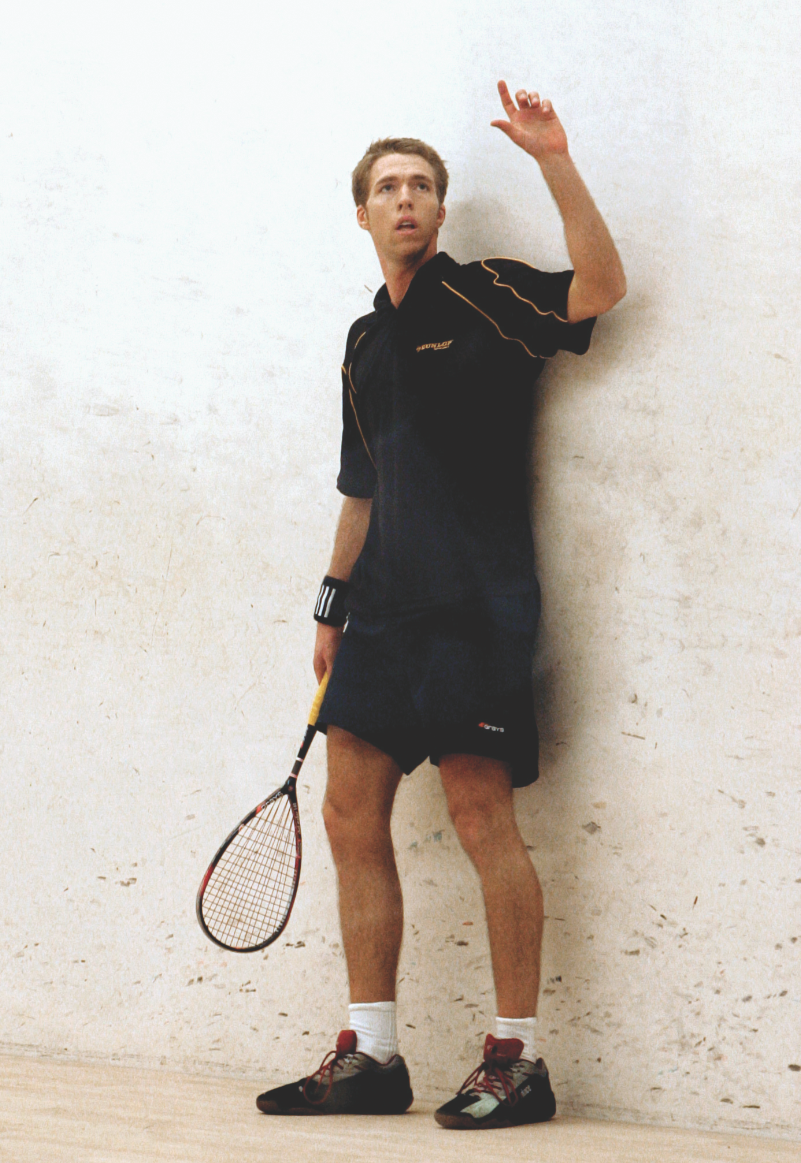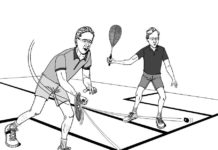By Barry Faguy, WSF Referees and Rules Committee
A tough act to follow: Well, Rod Symington put in 13 years on this page. It’s hard to argue with the fine job he’s done—but I’ll give it a shot! Just kidding!
Actually, I’m not kidding! I do have some differences and it’ll be fun to explore those areas. No surprise of course, because the wording of the rules does indeed allow for different interpretations. Wouldn’t it be nice to have the concepts relating to interference written so as to be as black and white as those relating to the lines? That ain’t gonna happen of course—but efforts are indeed underway to simplify things.
DISCLAIMER: This column reflects my own views and not necessarily those of the WSF. Take the information you find here and see if it’s compatible with the rules—if it’s sensible—and if it makes your decision-making easier.

Principles of Interference
If you’re trying to fix something that is broken, and you don’t know how it works, then aren’t you just poking around in the dark? Decision-making for interference situations (our main subject) is analogous. When a rally is ‘broken’ (ending with an appeal instead of play), you can best ‘fix’ it (render a fair decision) if you know how it works (the components of that form of interference). Let’s look at a few things:
1. Forms of interference: There are only four:
- to seeing the ball
- to getting to the ball
- to swinging at the ball
- to hitting the ball to the front wall.
2. Rights & Obligations: The rules of the game grant the striker the right to be free from those interferences—and impose the obligation on the non-striker to try to ensure that the striker is free from those interferences.
3. Blame: Anytime there is legitimate interference, it has to be the fault of the non-striker. There’s no one else on the court—is there? Any such interference means that the non-striker either didn’t clear fast enough…or in the right direction.
Zero tolerance?
So, given that last statement, one could reasonably conclude that any time we have any interference, the non-striker should be penalized for having caused that problem. Right? Not quite. I’m sure you can imagine the chaotic state of the game if we actually took such a zero-tolerance attitude. Interference being a given, there’d be incessant stoppages—all of them necessarily ending in strokes.
The way out
To get around this problem, the rules require the application of some extra concepts before we can conclude the matter with a stroke. There are many, such as the striker’s effort to play the ball, the non-striker’s effort to clear, and several others. To be continued…
COMING UP: Alright, this intro was a bit dry—but next time we’ll get on to a truly troublesome topic—the twing…er…swing!
MEANWHILE: If you want information on just about any officiating topic, go to (www.squash.ca/e/officiating/tso/)—and click on the ‘Library’ link to the left to find your subject.





